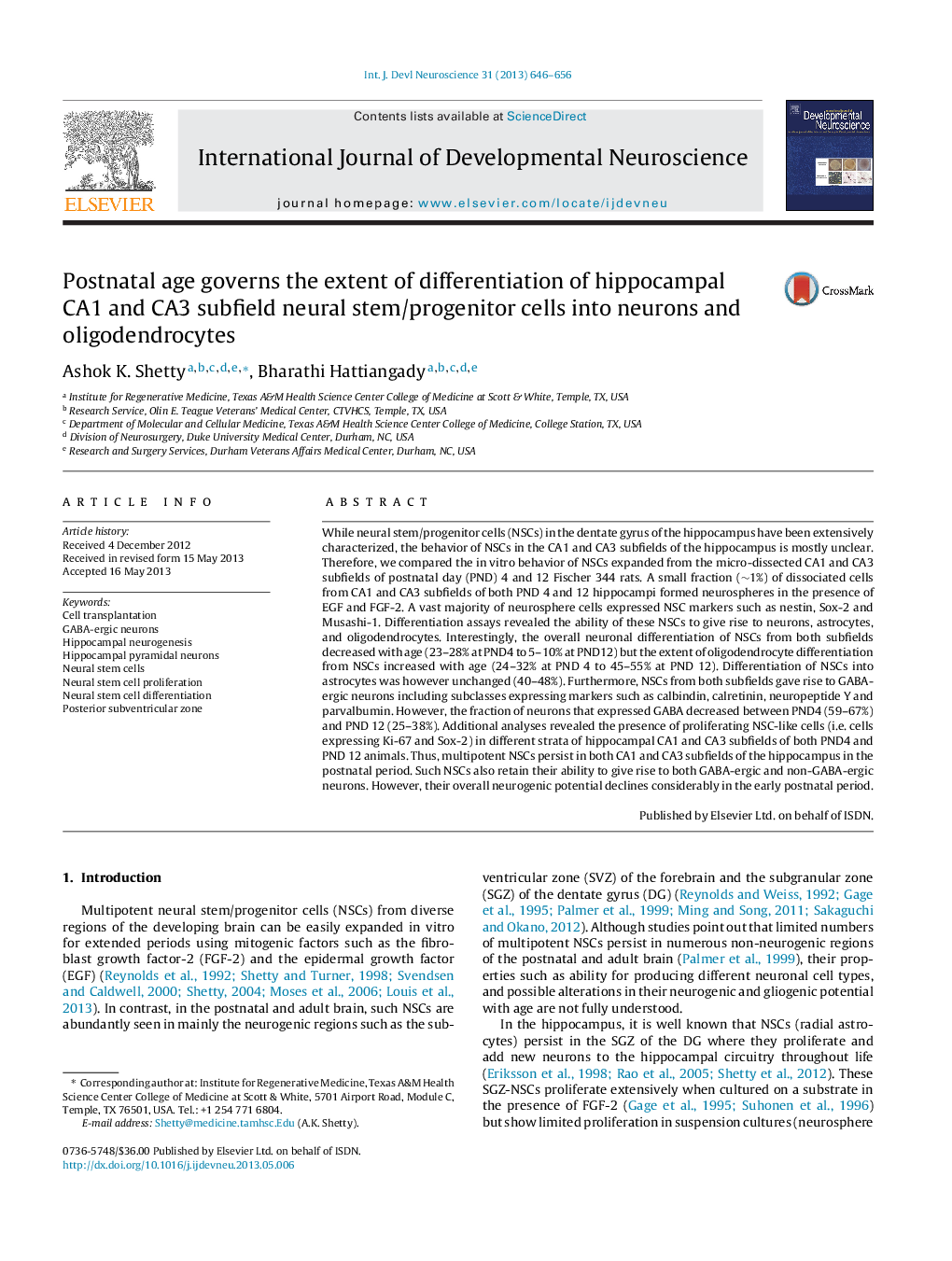| Article ID | Journal | Published Year | Pages | File Type |
|---|---|---|---|---|
| 5893949 | International Journal of Developmental Neuroscience | 2013 | 11 Pages |
â¢Multipotent neural stem cells (NSCs) persist in CA1 and CA3 subfields of the postnatal hippocampus.â¢Neuronal differentiation potential of NSCs in CA1 and CA3 subfields decreases with postnatal age.â¢Oligodendrocyte differentiation of NSCs in CA1 and CA3 subfields increases with postnatal age.â¢NSCs from postnatal CA1 and CA3 subfields can generate GABA-ergic neurons.â¢NSCs from postnatal CA1 and CA3 subfields can generate different subclasses of GABA-ergic neurons.
While neural stem/progenitor cells (NSCs) in the dentate gyrus of the hippocampus have been extensively characterized, the behavior of NSCs in the CA1 and CA3 subfields of the hippocampus is mostly unclear. Therefore, we compared the in vitro behavior of NSCs expanded from the micro-dissected CA1 and CA3 subfields of postnatal day (PND) 4 and 12 Fischer 344 rats. A small fraction (â¼1%) of dissociated cells from CA1 and CA3 subfields of both PND 4 and 12 hippocampi formed neurospheres in the presence of EGF and FGF-2. A vast majority of neurosphere cells expressed NSC markers such as nestin, Sox-2 and Musashi-1. Differentiation assays revealed the ability of these NSCs to give rise to neurons, astrocytes, and oligodendrocytes. Interestingly, the overall neuronal differentiation of NSCs from both subfields decreased with age (23-28% at PND4 to 5-10% at PND12) but the extent of oligodendrocyte differentiation from NSCs increased with age (24-32% at PND 4 to 45-55% at PND 12). Differentiation of NSCs into astrocytes was however unchanged (40-48%). Furthermore, NSCs from both subfields gave rise to GABA-ergic neurons including subclasses expressing markers such as calbindin, calretinin, neuropeptide Y and parvalbumin. However, the fraction of neurons that expressed GABA decreased between PND4 (59-67%) and PND 12 (25-38%). Additional analyses revealed the presence of proliferating NSC-like cells (i.e. cells expressing Ki-67 and Sox-2) in different strata of hippocampal CA1 and CA3 subfields of both PND4 and PND 12 animals. Thus, multipotent NSCs persist in both CA1 and CA3 subfields of the hippocampus in the postnatal period. Such NSCs also retain their ability to give rise to both GABA-ergic and non-GABA-ergic neurons. However, their overall neurogenic potential declines considerably in the early postnatal period.
